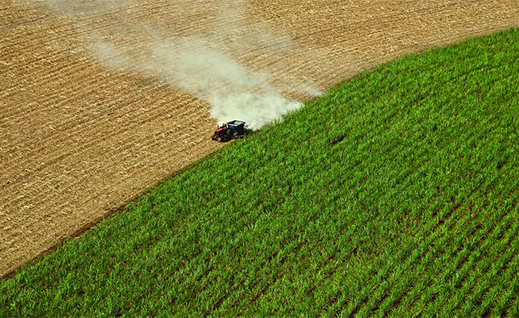The Problem with Biofuels
Last week the U.S. Navy, with its accustomed pomp and fanfare, launched its first carrier strike group powered partly by biofuel—in this case, a blend made primarily from beef fat. The biofueled warships form a central element of the Navy’s Great Green Fleet program to draw half of its power from clean energy sources, rather than petroleum, by 2020.

Attended by secretary of the Navy Ray Mabus and agriculture secretary Tom Vilsack, the ceremony masked what has been nearly a decade of problems for biofuels—an energy source once touted as capable of virtually eliminating the use of petroleum in the transportation sector. Today biofuels production and consumption stand at a fraction of the levels foreseen under the Renewable Fuel Standard, a federal mandate signed by President George W. Bush that requires fuels made from corn, sugarcane, and other biological sources to be mixed into the nation’s gasoline supply.
That’s just the beginning of the issues with biofuels, though. When President Bush’s Renewable Fuel Standard was just getting off the ground, we wrote about the steep cost of biofuels. The mandates outlined in the legislation created an industry whose size wouldn’t make sense unless oil went north of $120 a barrel (it’s hovering around $30 a barrel today).
Worse, corn ethanol, the most common form of biofuel, is actually at least as carbon-intensive as gasoline from oil.
Robert Bryce, a fellow at the Manhattan Institute and a longtime critic of government-backed efforts to make biofuels a key part of a clean transportation future, calls the biofuels program a “scam” that has cost taxpayers millions of dollars and is unlikely to ever make a significant dent in the consumption of conventional oil.
He’s got a point—but politicians on both sides of the aisle are mostly keeping their mouths shut on the issue. Of the presidential candidates currently on the 2016 campaign trail, only Republican Senator Ted Cruz has come out against biofuels. This makes sense given that the first big nomination contest takes place next week in Iowa, the source of much of the ethanol grown in the U.S.
Despite the growing awareness of the shortcomings of biofuel as a clean energy source, the government’s support for biofuels, coming from the departments of energy and agriculture and the Pentagon, continues, with hundreds of millions in additional funding. And last October, DuPont opened a big new plant for cellulosic biofuels (which don’t compete with food crops, but have their own problems). The location? Iowa, naturally.
Keep Reading
Most Popular
Large language models can do jaw-dropping things. But nobody knows exactly why.
And that's a problem. Figuring it out is one of the biggest scientific puzzles of our time and a crucial step towards controlling more powerful future models.
How scientists traced a mysterious covid case back to six toilets
When wastewater surveillance turns into a hunt for a single infected individual, the ethics get tricky.
The problem with plug-in hybrids? Their drivers.
Plug-in hybrids are often sold as a transition to EVs, but new data from Europe shows we’re still underestimating the emissions they produce.
Google DeepMind’s new generative model makes Super Mario–like games from scratch
Genie learns how to control games by watching hours and hours of video. It could help train next-gen robots too.
Stay connected
Get the latest updates from
MIT Technology Review
Discover special offers, top stories, upcoming events, and more.